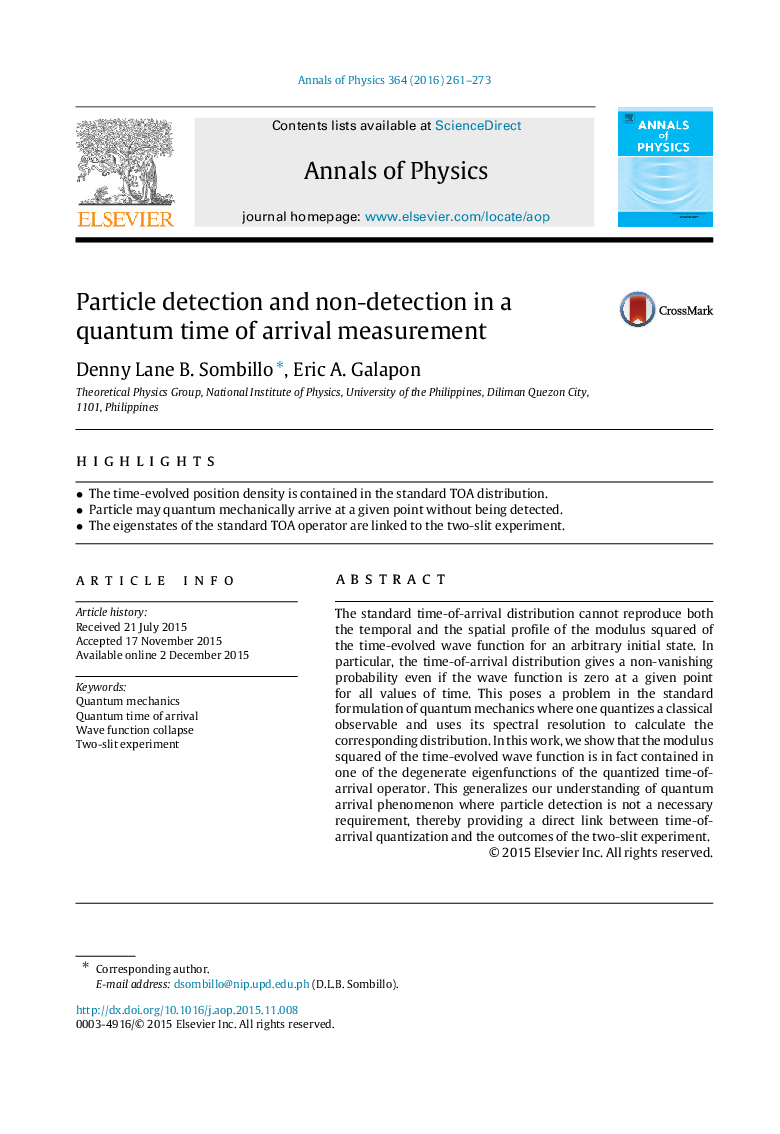| Article ID | Journal | Published Year | Pages | File Type |
|---|---|---|---|---|
| 8201815 | Annals of Physics | 2016 | 13 Pages |
Abstract
The standard time-of-arrival distribution cannot reproduce both the temporal and the spatial profile of the modulus squared of the time-evolved wave function for an arbitrary initial state. In particular, the time-of-arrival distribution gives a non-vanishing probability even if the wave function is zero at a given point for all values of time. This poses a problem in the standard formulation of quantum mechanics where one quantizes a classical observable and uses its spectral resolution to calculate the corresponding distribution. In this work, we show that the modulus squared of the time-evolved wave function is in fact contained in one of the degenerate eigenfunctions of the quantized time-of-arrival operator. This generalizes our understanding of quantum arrival phenomenon where particle detection is not a necessary requirement, thereby providing a direct link between time-of-arrival quantization and the outcomes of the two-slit experiment.
Related Topics
Physical Sciences and Engineering
Physics and Astronomy
Physics and Astronomy (General)
Authors
Denny Lane B. Sombillo, Eric A. Galapon,
